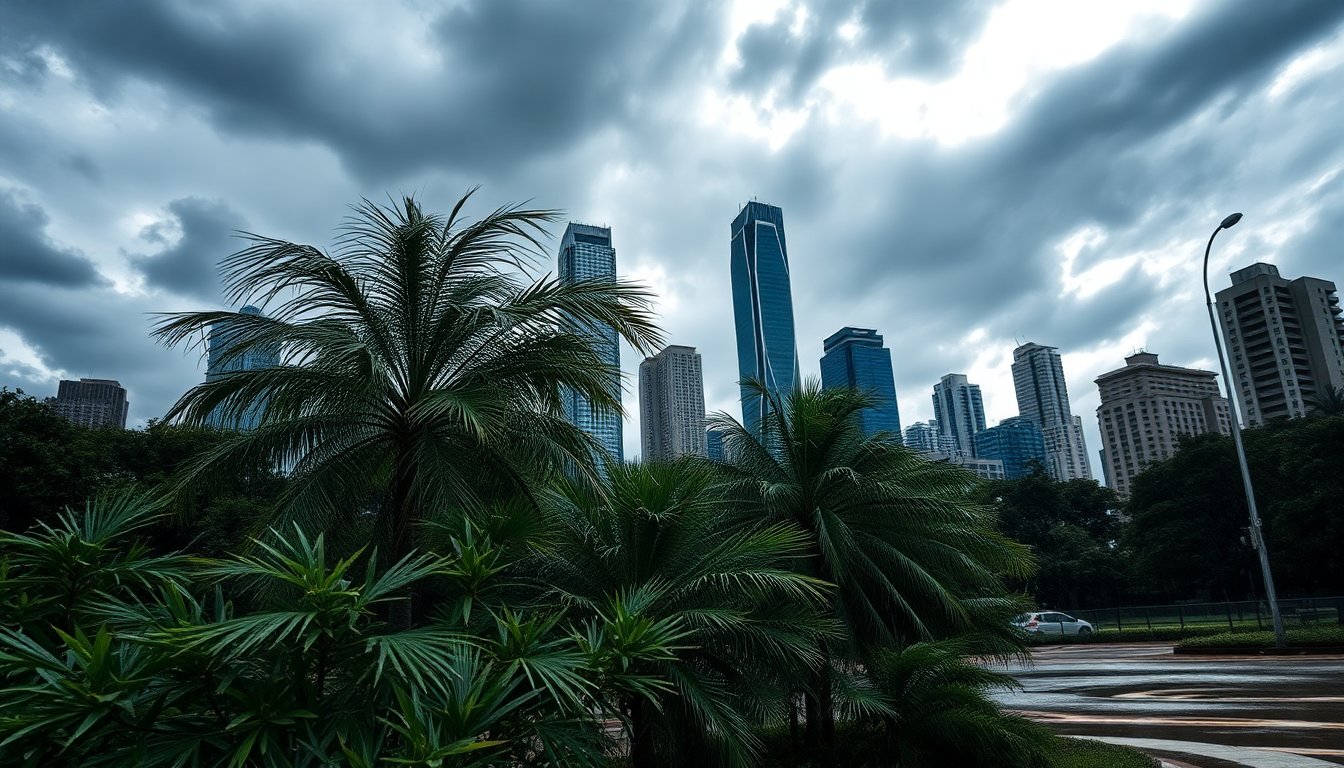Table of Contents
This weekend, the Hong Kong Observatory downgraded its weather warnings, reducing the typhoon signal to No. 1. This adjustment followed the departure of tropical depression Mitag from the region. However, experts warn of potential worsening conditions next week with the expected arrival of Ragasa, which may evolve into a super typhoon.
On Saturday at 9:20 AM, the observatory transitioned from a No. 3 strong wind signal to the standby No. 1 signal. Forecasters reported that Mitag had passed approximately 100 kilometers north of the city and was gradually moving away.
Current Conditions and Future Perspectives
As of 9 AM, Mitag was located around 130 kilometers to the north-northwest of Hong Kong. Its trajectory indicates a slow west-northwest movement through the northern Pearl River Estuary. While the immediate threat has eased, weather conditions in Hong Kong remain unstable. Rainbands from Mitag are expected to continue producing heavy showers and possible thunderstorms.
Impending Threat of Typhoon Ragasa
The forecast suggests that as Mitag moves out, the potential arrival of Ragasa raises concerns for residents. This new storm is projected to strengthen, prompting increased vigilance among the public and authorities. Meteorologists are closely monitoring Ragasa’s development, as its intensity could significantly alter weather patterns in the region.
Health and Environment: Challenges Ahead
As the city faces these weather changes, residents confront additional challenges related to urban heat. The increasing frequency of extremely hot days and nights underscores the urgent need for effective solutions. Many inhabitants, including 68-year-old Samuel Wong Wang-fat, struggle to find relief in cramped living conditions.
Wong resides in a compact 35-square-foot cubicle in Sham Shui Po, relying on wet towels and a small fan to combat the heat. His building contains 15 small flats sharing a single inadequate air conditioner located in the corridor. Wong expresses reluctance to open windows due to pest concerns, preferring the stifling heat of his home over the external conditions.
Urban Planning and Green Spaces
As urban temperatures rise, experts urge Hong Kong’s authorities to reevaluate their strategies for enhancing the city’s green spaces. The observatory reported a concerning increase in the number of days categorized as very hot, with records showing between 52 and 54 such days annually from 2021 to 2024, the highest since monitoring began in 1884.
Additionally, the city recorded over 50 nights classified as hot nights, with temperatures exceeding 28 degrees Celsius each year from 2020 to 2024, peaking at 61 in 2021. It is clear that without significant intervention, the urban environment will continue to face challenges from rising temperatures.
Shifting Economic Landscapes
In a different context, the implications of global trade dynamics are becoming evident. A recent trade fair in Nanning, China, highlighted the increasing focus of exporters on Southeast Asia. With the region’s economies experiencing rapid expansion, many Chinese companies are shifting from traditional Western markets to explore new opportunities.
Li Wenqi, a manager in the electric scooter industry, reflects on this transformation, noting that the saturation of Western markets has prompted a search for new avenues. He emphasizes the substantial potential presented by Southeast Asia’s young population and emerging markets, where demand remains strong.
Conclusion
On Saturday at 9:20 AM, the observatory transitioned from a No. 3 strong wind signal to the standby No. 1 signal. Forecasters reported that Mitag had passed approximately 100 kilometers north of the city and was gradually moving away.0


